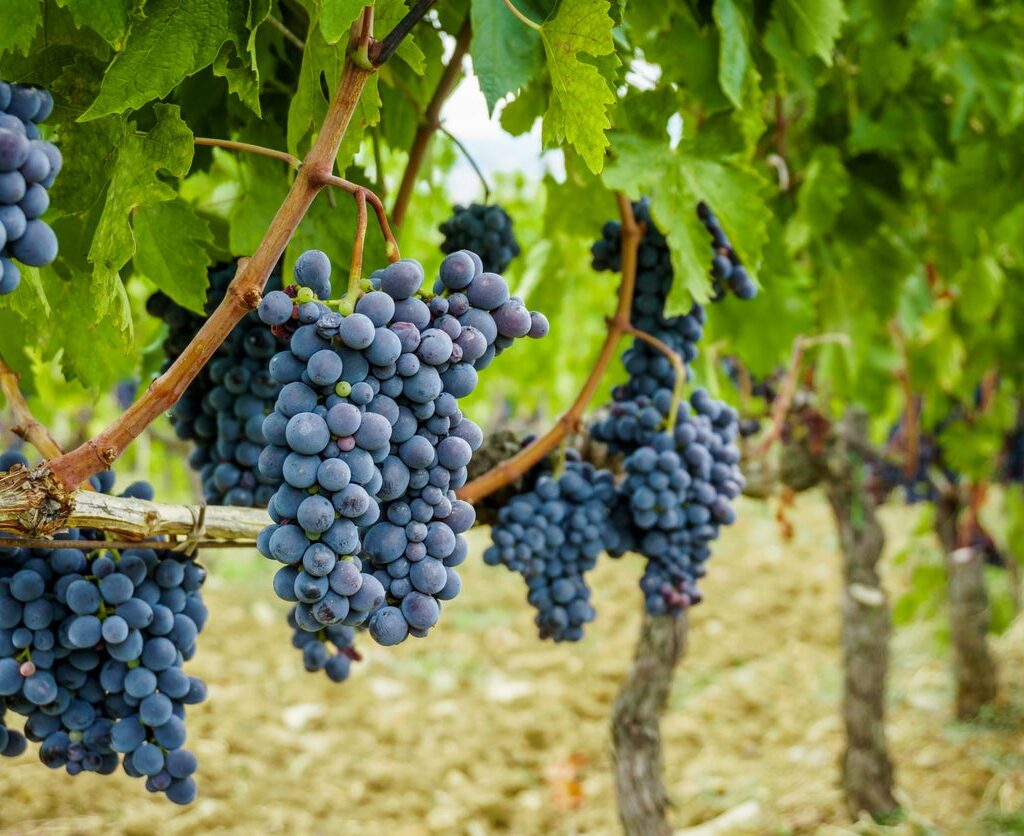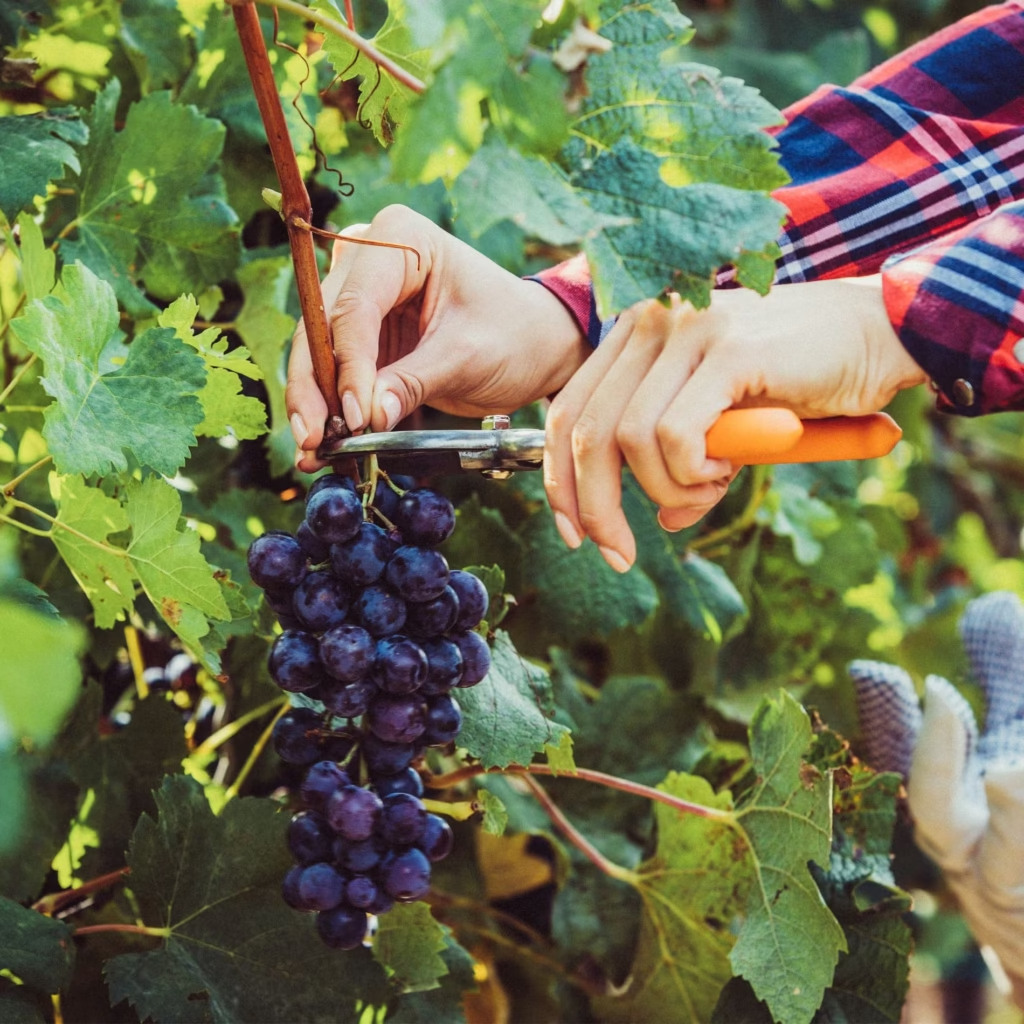Ever dreamt of strolling through your own vineyard, plucking sun-ripened grapes straight from the vine? Whether you have a large backyard or a cozy corner in your garden, growing grapes at home is both achievable and deeply rewarding. Not only do grapevines add a touch of rustic beauty to your landscape, but they also provide delicious, versatile fruit for fresh eating, juices, jams, and even winemaking.
In this guide, we’ll walk you through everything you need to know about how to plant grapes and grow your own vineyard — from choosing the right varieties to harvesting your first luscious clusters.

Why Grow Grapes at Home?
Grapes are one of the most versatile fruits you can grow. Once established, they’re surprisingly hardy and productive, providing abundant harvests for decades. Plus, the vines themselves are beautiful — creating natural trellises, arbors, or shade covers for patios and outdoor spaces.
Benefits of growing grapes at home:
- Fresh, pesticide-free fruit at your fingertips
- Save money on store-bought grapes and wines
- Gorgeous, lush greenery for fences, pergolas, and trellises
- Long lifespan: a healthy grapevine can produce for 30-50 years
- Opportunity to experiment with homemade jams, jellies, juices, or wines
Choosing the Right Grape Variety
Success starts with selecting the right type of grape for your region and purpose. Grapes fall into three main categories:
1. Table Grapes
- Grown for fresh eating
- Usually seedless, sweet, and juicy
Popular Varieties: Thompson Seedless, Concord, Flame Seedless
2. Wine Grapes
- Used in winemaking
- Typically smaller, seedier, with complex flavors
Popular Varieties: Cabernet Sauvignon, Merlot, Chardonnay
3. Juice and Jelly Grapes
- Perfect for making preserves and juices
Popular Varieties: Concord, Niagara
Consider your climate when choosing a variety:
- Cold-hardy grapes like Concord and Catawba thrive in northern zones (4-7)
- Heat-loving varieties like Thompson Seedless prefer warmer regions (7-10)
Check with a local nursery or extension service for the best options in your area.

When and Where to Plant Grapes
Ideal planting time:
- Early spring in cooler climates, after the last frost
- Late fall or winter in mild, frost-free regions
Choosing the perfect location:
- Full sun: Grapevines need at least 6-8 hours of sunlight daily
- Well-draining soil: Avoid areas with standing water
- Good air circulation: Reduces disease risk
- Plant away from large trees, as grapevines dislike competition for nutrients and sunlight
Preparing the Soil
Grapevines prefer slightly acidic to neutral soil (pH 5.5-7.0).
Test your soil with a home kit and amend as needed.
Soil preparation tips:
- Loosen soil to a depth of 12-18 inches
- Add organic matter like compost or aged manure
- Mix in a balanced fertilizer if your soil is nutrient-poor
- Ensure excellent drainage to prevent root rot

How to Plant Grapes
Planting grapevines correctly is key to their long-term health and productivity.
Step 1: Choose Healthy Plants
Opt for one-year-old bare-root vines from reputable nurseries or garden centers. Look for strong, healthy roots and avoid dry, shriveled stock.
Step 2: Dig Planting Holes
- Dig holes 12 inches deep and 12 inches wide
- Space vines 6-10 feet apart in rows 8-12 feet apart
- For container-growing, use a 5-10 gallon pot with good drainage
Step 3: Plant the Vine
- Place the vine in the hole with the roots spread out
- Position the crown (where stem meets roots) 2 inches above soil level
- Backfill with soil, firming gently
- Water thoroughly after planting
Trellising and Training Grapevines
Grapevines are natural climbers and need support structures like trellises, arbors, or fences to grow properly.
Popular support systems:
- Single wire trellis
- Two-wire system
- Pergola or arbor
Training tips:
- In the first year, allow one strong shoot to grow and tie it to the support
- Prune away weaker shoots
- Encourage upward growth by loosely tying the vine as it grows
Watering and Care
Watering:
- Keep soil evenly moist, especially during the first year
- Water deeply once a week in dry conditions
- Avoid overwatering — grapevines dislike soggy soil
Mulching:
Apply a 2-3 inch layer of mulch around the base to retain moisture, regulate soil temperature, and suppress weeds.
Pruning Grapes for Healthy Growth
Pruning is essential for grape health and productivity. Unpruned vines become tangled, overcrowded, and unproductive.
When to prune:
- In late winter or early spring before new growth starts
How to prune:
- Remove dead or weak wood
- Cut back main canes to 3-4 strong buds
- Thin crowded shoots during the growing season to improve airflow
Proper pruning increases sunlight exposure and fruit quality while preventing diseases like powdery mildew.

Common Pests and Diseases
While generally hardy, grapevines can occasionally face threats from:
Pests:
- Aphids
- Japanese beetles
- Grape leafhoppers
Control methods:
- Handpick pests
- Spray with neem oil or insecticidal soap
Diseases:
- Powdery mildew
- Black rot
- Downy mildew
Prevention tips:
- Ensure good air circulation
- Avoid overhead watering
- Remove infected leaves and debris
How and When to Harvest Grapes
When to harvest:
- Most grapes are ready late summer to early fall
- Harvest when color deepens, and flavor is sweet
- Taste-test a few before picking
How to harvest:
- Use sharp scissors or pruners
- Cut clusters carefully to avoid damaging vines
- Handle grapes gently to prevent bruising
Pro Tip: Unlike some fruits, grapes don’t ripen after picking — so harvest only when fully ripe.
Storing and Using Fresh Grapes
Storage tips:
- Keep grapes on their stems in the refrigerator
- Store in a ventilated container or paper bag
- Use within 1-2 weeks
Uses for homegrown grapes:
- Fresh eating
- Juices and smoothies
- Jams, jellies, and preserves
- Homemade wine and vinegar
- Dried into raisins
Final Thoughts: Your Vineyard Adventure Awaits
Growing grapes at home is a beautiful blend of patience and reward. Once established, these hardy vines will grace your garden with shade, greenery, and abundant harvests for years. Whether you’re dreaming of sipping your own backyard wine or snacking on sun-warmed clusters, the journey begins with a simple planting hole and a single young vine.
So grab your garden gloves, plant your future vineyard, and savor the timeless pleasure of growing your own grapes.





Leave A Comment